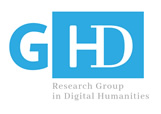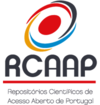‘Thinking Ontologically’: Ontology Development as the Basis for the Systematic Analysis of a Corpus of Late Antique Aramaic Magic Texts
DOI:
https://doi.org/10.21814/h2d.3403Keywords:
Ontology, Jewish Babylonian Aramaic magic bowls, CIDOC Conceptual Reference Model, CRM, Typologies, DomainAbstract
This article describes the process of developing an ontology of the domain of Jewish Babylonian Aramaic magic bowls and offers some reflections on its significance in the analysis of these materials. Examples are highlighted to illustrate where the work builds on existing conceptualisations of the domain in secondary literature and where magical and religious materials from the Ancient Near East might stimulate some specialised extension of the CIDOC Conceptual Reference Model (ICOM/CIDOC Documentation Standards Group, 2020). The analogy of ‘bridge building’ is offered as a way for humanities researchers to conceive of the work to produce ontologies of specific domains. This reflection is intended to capture the experience of ‘thinking ontologically’ about sources for the first time and of overcoming misconceptions about the nature and significance of this work.
Downloads
References
Bhayro, S., Ford, J. N., Levene, D., & Saar, O.-P. (2018). Aramaic magic bowls in the Vorderasiatisches Museum in Berlin. Brill. https://doi.org/10.1163/9789004373686
Brickley, D., & Miller, L., (2014). FOAF vocabulary specification 0.99. http://xmlns.com/foaf/spec/
Chandrasekaran, B., Josephson, J. R., & Benjamins, V. R. (1999). What are Ontologies, and why do we Need Them? IEEE Intelligent Systems and their applications, 14(1), 20-26. https://doi.org/10.1109/5254.747902
Ford, J. N., & Morgernstern, M. (2020). Aramaic incantation bowls in museum collections – Volume. 1: The Frau Professor Hilprecht collection of Babylonian antiquities, Jena. Brill. https://doi.org/10.1163/9789004411838
ICOM/CIDOC Documentation Standards Group, (2020). Definition of the CIDOC conceptual reference model version 7.0.1. ICOM/CRM Special Interest Group. http://www.cidoc-crm.org/Version/version-7.0.1
Levene, D. (2002). Curse or blessing: What's in the magic bowl? The Parkes Institute. https://humanities.exeter.ac.uk/media/universityofexeter/collegeofhumanities/theology/ourresearch/documents/Levene_Curse_or_Blessing.pdf
Pitti, D. V. (2004). Designing sustainable projects and publications. In S. Schreibman, R. Siemens, & J. Unsworth (Eds.), A companion to digital humanities (pp. 469-487). Blackwell. https://doi.org/10.1002/9780470999875.ch31
Ramsay, S. (2004). Databases. In S. Schreibman, R. Siemens, & J. Unsworth (Eds.), A companion to digital humanities (pp.
-197). Blackwell. https://doi.org/10.1002/9780470999875.ch15
Shaked, S., Ford, J. N., & Bhayro, S. (2013). Aramaic bowl spells: Jewish Babylonian Aramaic bowls (Vol. 1). Brill. https://doi.org/10.1163/9789004229372
Sperberg-McQueen, C. M. (2004). Classification and its structures. In S. Schreibman, R. Siemens, & J. Unsworth (Eds.), A companion to digital humanities (pp. 161-176). Blackwell. https://doi.org/10.1002/9780470999875.ch14
Downloads
Published
How to Cite
Issue
Section
License
Copyright (c) 2021 H2D|Digital Humanities Journal

This work is licensed under a Creative Commons Attribution 4.0 International License.






